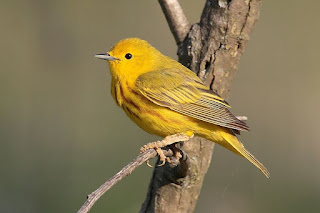Reading Notes: South Africa Folktales, Part A
(Found on the Mythology and Folklore UNTextbook, image of tink-tinkje)
For this first part of South Africa Folktales, I focused primarily on the story "Tink-Tinkje" from South African Folk-Tales by James Honey (1910). I really enjoyed reading this story because it definitely reminded me of classic folk tales from other cultures while using pieces that are specific to South Africa.
The story focuses on the animal kingdom, specifically the birds that can be found in South Africa. The whole premise of this tale is their efforts to crown a king for their bird kingdom, but they can't decide who is most qualified and capable. It quickly turns into a battle between the vulture and the tink-tinkje, two polar opposites. The vulture has big wings and is strong, powerful, and intimidating; while the tink-tinkje is a little colorful bird that is timid and squeaks. All of the rest of the bird kingdom were cheering for the vulture, confident that he would win the crown. The determination of the winner was based on who could fly the highest, and this challenge lasted five days.
Every time the vulture thought he won, the tink-tinkje would sneak out from beneath the vulture's wings and fly higher. After five days, the culture got too tired and ultimately returned to the ground. This outraged the rest of the kingdom, as they thought the tink-tinkje took advantage of the vulture's big wings and cheated his way into winning. They ran the tink-tinkje out of their kingdom and into a mouse hole, where he hid for days. The owl was nominated to guard this mouse hole so that the tink-tinkje would be caught when trying to escape. However, when the owl fell asleep, this allowed the tink-tinkje a moment to escape and go find shelter in a tree.
When he escaped, the kingdom became outraged once again, and they knew there was nothing they could do. The white-crow was the most furious, so much so that he vowed to never speak again no matter the circumstances.
Reading this folktale, I found it so interesting at how values were displayed through the storytelling. This story didn't really have a happy ending, but it didn't have a bad one either. It just kind of ended. I felt that this was very fitting considering the context of the story, as there was no real explanation to why the tink-tinkje wasn't liked from the beginning or why the rest of the kingdom preferred the vulture in the first place. I feel that this is consistent with South African culture during the time, as the Union of South Africa started in 1910 (the same year these folktales were published). The tink-tinkje could be a symbol for South Africa while the vulture symbolized the UK, as the UK felt superior to South Africa and didn't want them to fight back, much like the relationship between the vulture and the tink-tinkje.



Comments
Post a Comment